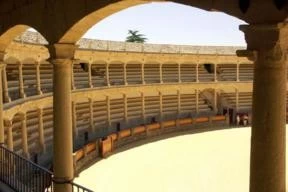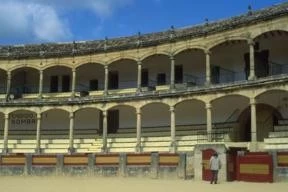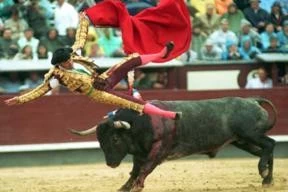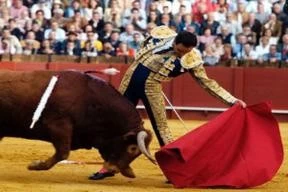Spanish Bullfighting History
Hugo
Http://www.xy-global.com
2018-02-01 11:24:10
Spanish Bullfighting History?
The spectacle of bullfighting has existed in one form or another since ancient days. For example, a contest of some sort is depicted in a wall painting unearthed at Knossos in Crete, dating from about 2000 BC. It shows male and female acrobats confronting
Bullfights were popular spectacles in ancient Rome but it was in the Iberian Peninsula that these contests were fully developed. The Moors from North Africa who overran Andalusia in AD 711 changed bullfighting significantly from the brutish, formless spectacle practised by the conquered Visigoths to a ritualistic occasion observed in connection with feast days on which the conquering Moors, mounted on highly trained horses, confronted and killed the bulls.
As bullfighting developed the men on foot, who by their capework aided the horsemen in positioning the bulls, began to draw more attention from the crowd and the modern corrida began to take form. Today the bullfight is much the same as it has been since about 1726, when Francisco Romero of Ronda, Spain, introduced the estoque (the sword) and the muleta (the small, more easily wielded worsted cape used in the last part of the fight).


Bull fighting: The Spectacle
Six bulls, to be killed by three matadors, are usually required for one afternoon’s corrida and each encounter lasts about 15 minutes. At the appointed time, generally 5 PM, the three matadors, each followed by their assistants, the banderilleros and the picadors, march into the ring to the accompaniment of traditional paso doble (“march rhythm”) music. The matadors (the term toreador, popularized by the French opera Carmen, is erroneous usage) are the stars of the show. They wear a distinctive costume consisting of a silk jacket heavily embroidered in gold, skintight trousers, and a montera (a bicorne hat). A traje de luces (“suit of lights”), as it is known, can cost several thousand pounds; a top matador must have at least six of them a season.
When a bull first comes into the arena out of the toril, or bull pen gate, the matador greets it with a series of manoeuvres, or passes, with a large cape; these passes are usually verónicas, the basic cape manoeuvre (named after the woman who held out a cloth to Christ on his way to the crucifixion).
The amount of applause the matador receives is based on his proximity to the horns of the bull, his tranquillity in the face of danger and his grace in swinging the cape in front of an infuriated animal weighing more than 460 kg (1,000 lb). The bull instinctively goes for the cloth because it is a large, moving target, not because of its colour; bulls are colour-blind and charge just as readily at the inside of the cape, which is yellow.
Fighting bulls charge instantly at anything that moves because of their natural instinct and centuries of special breeding. Unlike domestic bulls they do not have to be trained to charge nor are they starved or tortured to make them savage. Those animals selected for the corrida are allowed to live a year longer than those assigned to the slaughterhouse. Bulls to be fought by novilleros (beginners) are supposed to be three years old and those fought by full matadors are supposed to be at least four.


The second part of the corrida consists of the work of the picadors, bearing lances and mounted on horses (padded in compliance with a ruling passed in 1930 and therefore rarely injured). The picadors wear flat-brimmed, beige felt hats called castoreños, silver-embroidered jackets, chamois trousers and steel leg armour. After three lancings or less, depending on the judgment of the president of the corrida for that day, a trumpet blows, and the banderilleros, working on foot, advance to place their banderillas (brightly adorned, barbed sticks) in the bull’s shoulders in order to lower its head for the eventual kill.
The spectacle of bullfighting has existed in one form or another since ancient days. For example, a contest of some sort is depicted in a wall painting unearthed at Knossos in Crete, dating from about 2000 BC. It shows male and female acrobats confronting
Bullfights were popular spectacles in ancient Rome but it was in the Iberian Peninsula that these contests were fully developed. The Moors from North Africa who overran Andalusia in AD 711 changed bullfighting significantly from the brutish, formless spectacle practised by the conquered Visigoths to a ritualistic occasion observed in connection with feast days on which the conquering Moors, mounted on highly trained horses, confronted and killed the bulls.
As bullfighting developed the men on foot, who by their capework aided the horsemen in positioning the bulls, began to draw more attention from the crowd and the modern corrida began to take form. Today the bullfight is much the same as it has been since about 1726, when Francisco Romero of Ronda, Spain, introduced the estoque (the sword) and the muleta (the small, more easily wielded worsted cape used in the last part of the fight).


Bull fighting: The Spectacle
Six bulls, to be killed by three matadors, are usually required for one afternoon’s corrida and each encounter lasts about 15 minutes. At the appointed time, generally 5 PM, the three matadors, each followed by their assistants, the banderilleros and the picadors, march into the ring to the accompaniment of traditional paso doble (“march rhythm”) music. The matadors (the term toreador, popularized by the French opera Carmen, is erroneous usage) are the stars of the show. They wear a distinctive costume consisting of a silk jacket heavily embroidered in gold, skintight trousers, and a montera (a bicorne hat). A traje de luces (“suit of lights”), as it is known, can cost several thousand pounds; a top matador must have at least six of them a season.
When a bull first comes into the arena out of the toril, or bull pen gate, the matador greets it with a series of manoeuvres, or passes, with a large cape; these passes are usually verónicas, the basic cape manoeuvre (named after the woman who held out a cloth to Christ on his way to the crucifixion).
The amount of applause the matador receives is based on his proximity to the horns of the bull, his tranquillity in the face of danger and his grace in swinging the cape in front of an infuriated animal weighing more than 460 kg (1,000 lb). The bull instinctively goes for the cloth because it is a large, moving target, not because of its colour; bulls are colour-blind and charge just as readily at the inside of the cape, which is yellow.
Fighting bulls charge instantly at anything that moves because of their natural instinct and centuries of special breeding. Unlike domestic bulls they do not have to be trained to charge nor are they starved or tortured to make them savage. Those animals selected for the corrida are allowed to live a year longer than those assigned to the slaughterhouse. Bulls to be fought by novilleros (beginners) are supposed to be three years old and those fought by full matadors are supposed to be at least four.


The second part of the corrida consists of the work of the picadors, bearing lances and mounted on horses (padded in compliance with a ruling passed in 1930 and therefore rarely injured). The picadors wear flat-brimmed, beige felt hats called castoreños, silver-embroidered jackets, chamois trousers and steel leg armour. After three lancings or less, depending on the judgment of the president of the corrida for that day, a trumpet blows, and the banderilleros, working on foot, advance to place their banderillas (brightly adorned, barbed sticks) in the bull’s shoulders in order to lower its head for the eventual kill.



















